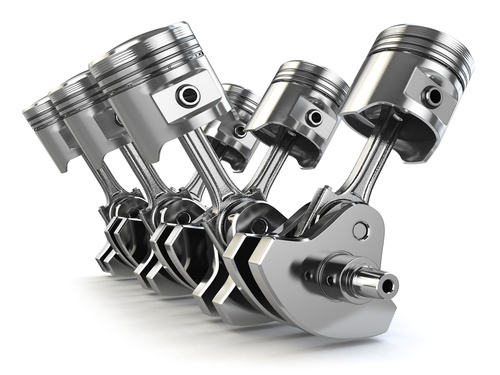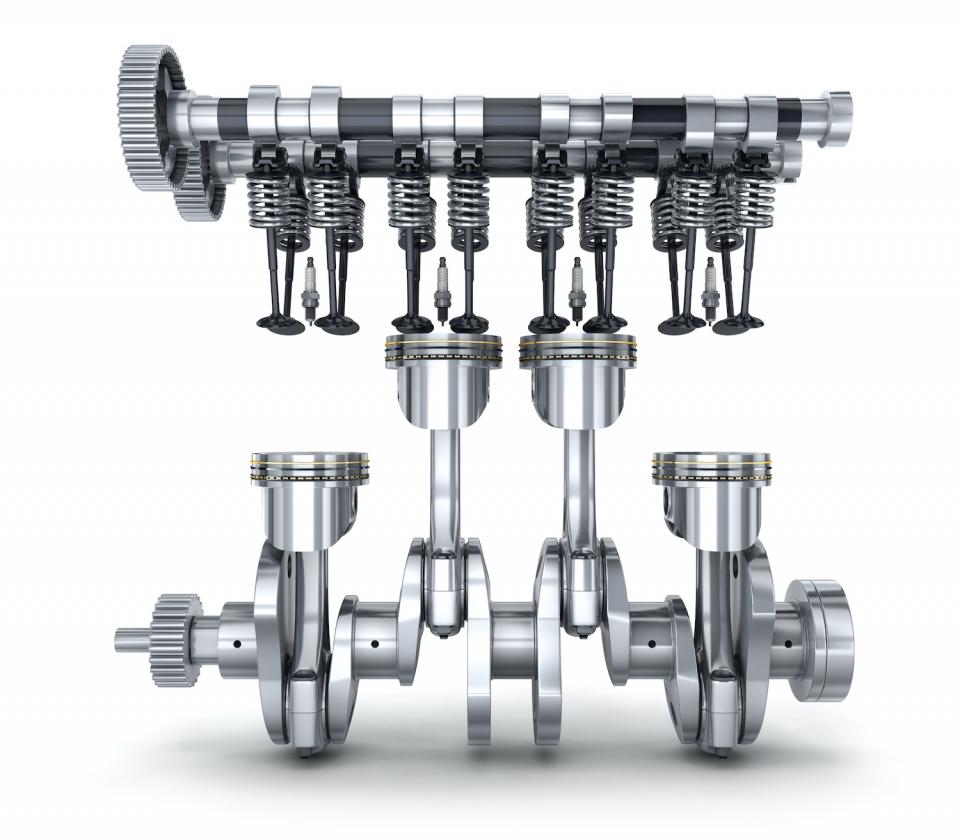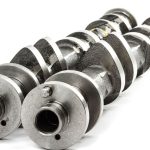What does a crankshaft do?
An engine crankshaft runs inside the bottom end of a car’s motor. It converts the vertical movement of the pistons into horizontal rotational movement, which ultimately drives the wheels via the gearbox.
Crankshafts have existed for hundreds of years, used in water mills and sawmills. They eventually became prominent in paddle boats, turning the energy from steam-powered pistons into rotational energy for the paddle wheels.
In today’s cars, the crank consists of evenly spaced ‘throws’ (there are four in a four-cylinder engine, as shown below), which are attached to the bottom of the pistons by connecting rods. These ‘throws’ are offset from the axis of the crank, which is what creates the rotational energy.

The crankshaft is attached to the engine by large bearings at either end. It connects to the flywheel, and through that, the clutch.
When the clutch is engaged, the rotational energy of the crankshaft is transmitted through the gearbox and on through the differential to the driveshafts, which are attached to the wheels, hence creating the car’s ability to move.
Camshaft vs crankshaft
A camshaft is positioned near the engine’s top and driven by the crankshaft via a timing chain or timing belt.
The camshaft (there can be up to four per engine, although the crank diagram below shows two) features cam lobes along its length that work with the valve train (which comprises the pushrod, valve lifter, valve spring, valve, and tappet or rocker’s arm) to facilitate the entry of air and fuel into the combustion chamber and the egress of exhaust gases following the power stroke part of the internal combustion engine cycle.
The camshaft’s rotating cam lobes open and close the engine valves. The lobes vary in size and shape from engine to engine to govern the duration a valve opens for and by how much. The more valves there are, the more air and fuel can be taken in and the more exhaust gases can escape, which increases engine power.
The engine crankshaft is positioned near the bottom end of the engine (as shown in the diagram below) and is attached to the pistons via connecting roads – the downward movement of the pistons as a result of the combustion process causes the crankshaft to rotate.

For More Press Here









